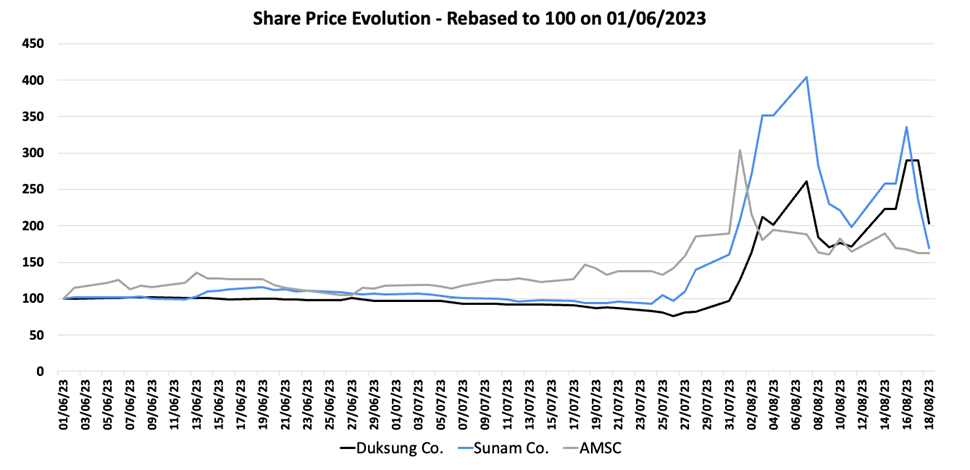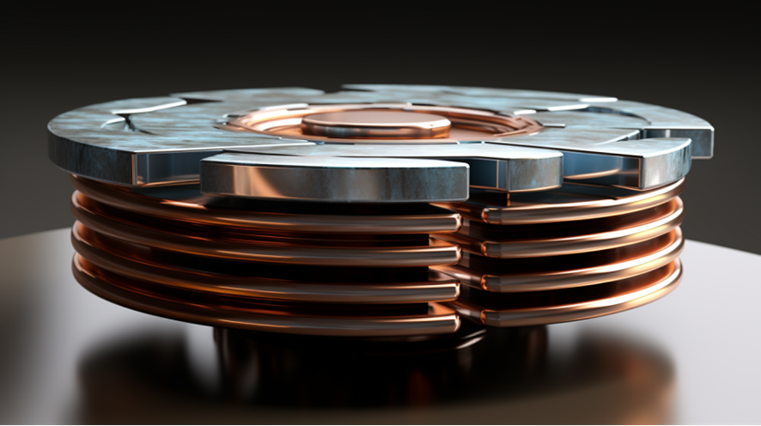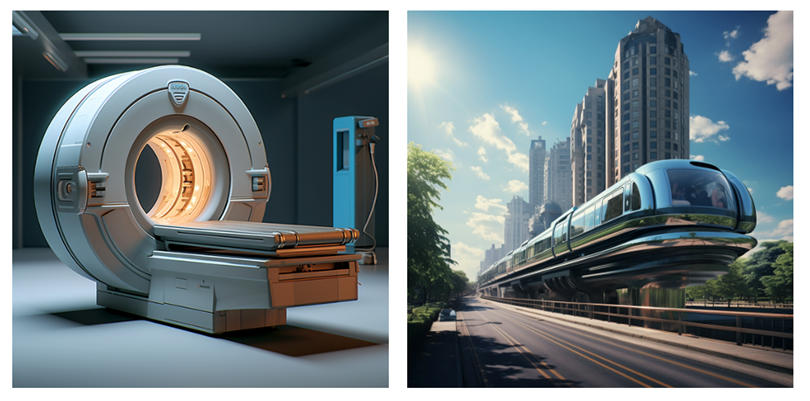Cédric Van Hooydonk graduated from the University of Antwerp in June 2022 with a Master's degree in Business Engineering. In his final academic year, Cédric joined the Econopolis team as an interim analyst. He combined his internship with a thesis dealing with the dynamic correlation between equity and bond yields. Cédric is a Portfolio Analyst and also a member of the Risk Committee.
A new golden age for humanity?
Breaking Resistance, Building the Future
For the past three weeks, academics as well as the general public were under the spell of a potential superconductor at room temperature. A superconductor is a substance that offers no resistance to the electric current when it becomes colder than a critical temperature. The material has the physical property where electrical resistance vanishes and magnetic fields are expelled. This property makes the material highly efficient for various applications, particularly in the field of electronics and energy transmission. Lee and Kim, two scientists who discovered a compound of lead and copper back in 1999, published a paper claiming they had proven superconductivity at room temperature of their groundbreaking material, LK-99. It sparked a lively and enthusiastic wave of online physics discussions and new publications followed. Will this spark enlighten a once-in-a-century breakthrough?
A brief history of Superconductors
The history of superconductors already spans several decades as it was first discovered by Kamerlingh Onnes in 1911. The Dutch physicist succeeded in liquifying helium which he used to cool down mercury to extreme low temperatures. He then stumbled on superconductivity as he observed that the electrical resistance of mercury dropped to zero. There was no energy loss due to heat emission nor light.
Bardeen, Cooper and Schrieffer developed the BCS theory four decades later. Their theory provided a first comprehensive explanation for the underlying mechanism of superconductivity. Without exploring the details too much, it states why superconductors abruptly lose all resistance to the flow of an electric current when they are cooled to temperatures near absolute zero Kelvin (-273.3° C). That is precisely where the problem lies. Before the claims of Lee and Kim, the highest temperature material to carry the super conductivity property did so at 70.15K (-20,3° C) under a pressure of 1.9 mln. Atmospheres. These requirements make it highly impractical. Its value is almost entirely lost as it takes a lot of energy to create the necessary environment for the material to work. A superconductor functioning at room temperature would be revolution as it would have a great impact on energy generation and distribution. In addition, the levitating property of superconductors would also benefit the progress of new transportation modes and electronic devices.
A spark?
Lee and Kim shook the academics realm when they uploaded a pre-print to the Cornell University’s ArXiv server. A pre-print is an early version of a research manuscript that is published before undergoing a peer-review. By doings so, researchers can communicate their work more quickly and widely, engage in scientific discussions, and receive input from their peers. And that is exactly what it did. Reputable researchers made efforts to replicate Lee and Kim’s results. The replicating studies unfortunately found evidence disproving the claims about LK-99. A freshly synthesized sample, made by researchers from the CSIR-National Physical Laboratory in India, does not show any signature of superconductivity levitation on a magnet and shows no sign of superconductivity in LK-99. In addition, The International Center for Quantum Materials in China found evidence that the material is ferromagnetic. The levitating character of LK-99 is thus not due to superconductivity, but rather due to the sample containing ferromagnetic components. So, it might well be that LK-99 was a false breakthrough and it is not the superconductor which academics hoped for. There is still some hope as the findings of the US Department of Energy’s Argonne National Library and other labs have yet to be published. What is sure is that Lee and Kim’s findings sparked enthusiasm and new research which may lead to new advances and findings. A practical superconductor might be the next big thing, but what are its applications?
Practical Applications of Superconductors
|
MRI Machines Low-temperature superconductors are used in MRI machines. They reach a superconducting state at below 9,4 degrees Kelvin and are cooled using Helium. Helium is a high-value commodity of which the cost has continued to rise to record highs. The dependency of MRI scanners on helium is not only expensive but also imposes the risk of shortages. A room temperature superconductor might enhance MRI-scanners as it would make helium abundant. It could potentially lower the overall costs of an MRI-scan. The scarce helium might be used in other industrial processes.
|
Maglev Trains Maglev trains, short for magnetic levitation train, are nothing new. It is a transportation system that uses magnetic forces to levitate a train above the tracks. Thus, allowing a train to glide at high speeds while minimizing friction. It surely looks as something from a futuristic movie, but it is already a reality. The Shangai Maglev Train is the world’s first commercial high-speed Maglev train reaching speeds of 300 km/h. It still lacks practicality as they are difficult and expensive to build and maintain. A room temperature super conductor might be the needed breakthrough for the Mavlev train. It would enlarge the distance over which such train is operational and might make it less expensive. |

|
Quantum Computing The arrival of a superconductor at room temperature would open new doors in the world of quantum computing. The problem quantum computing is facing today is that their calculations are not always reliable, and it takes a lot of energy to create a working environment. Because superconductors at room temperature do not lose energy nor need cooling, computations would become more energy efficient and quantum computing might become more practical. |
A power grid revolution As superconductors do not radiate any energy nor light, they are extremely practical in energy transmission application. Transmission lines made of superconducting materials would enable efficient energy transfer over long distances. Just imagine the energy efficiency of a Mavlev Train being powered by renewable energy transferred by superconducting wires.
|
LK-99’s impact on financial markets

The published paper by Lee and Kim had investors searching for the next big thing in the superconductor field. They piled into stocks related in some way to superconductors. The American Superconductor Corporation, listed on the Nasdaq, saw its shares double in the period following the claims of LK-99. The company generates ideas, technologies and solutions that meet the world’s demand for smarter, cleaner and better energy. The company does not have a direct link with LK-99 but might benefit from any technological advances in the space of superconductivity.
Moreover, South-Korean companies Duksung Co. and SuNam Co., a green energy technology company, have seen enormous volatility since the publication of the paper. Both stocks quadrupled in value. It is important to note that shares of both companies are very reactive to new pre-print publications and thus carry significant risks. SuNam Co. saw a two-day correction closing -50% from its recent high. These extreme market fluctuations had the South-Korean financial watchdog heighten its level of caution. The stocks are being carefully monitored to prevent aggressive margin trading.
It is clear that the finding of a superconductor working at room temperature would significantly improve the world we live in today. Although the peer reviews of LK-99 have been disappointing until now, it surely accelerated the research on superconductors. Exciting times ahead!


